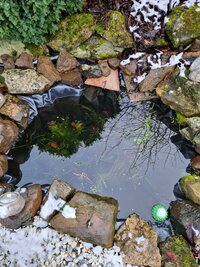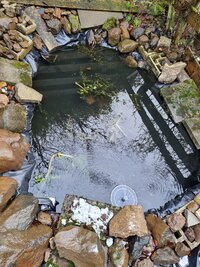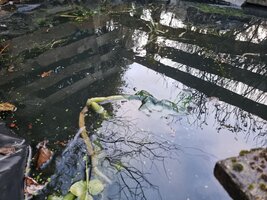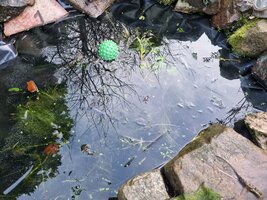millertime9
New Member
Happy new year, all
Last year I built a little pond then a bigger pond, but without much planning!
They are very much in the developmental stage, still need to work out the right way of hiding liners etc, but they did look good in the summer with lots of plant life, all died back over the winter though
I had loads of tadpoles which many made to froglet stage, which was superb
What was devastating though, was after they iced over with -10 degree weather, I found 11 dead frogs across both ponds
Genuinely heartbreaking
Now that the ice has melted, both ponds the water was stinking
I've fished out the dead frogs and a lot of dead leaves etc at the bottom of both
The smaller ones water has went back to crystal clear, but the bigger one is still very brown/murky and with a pretty bad smell
I've been using that little floating fountain, will that eventually help the big pond clear too, or should I be doing anything different?
Any help much appreciated as I want them to be hospitable for frogs again in spring and into summer
Thanks
Last year I built a little pond then a bigger pond, but without much planning!
They are very much in the developmental stage, still need to work out the right way of hiding liners etc, but they did look good in the summer with lots of plant life, all died back over the winter though
I had loads of tadpoles which many made to froglet stage, which was superb
What was devastating though, was after they iced over with -10 degree weather, I found 11 dead frogs across both ponds
Genuinely heartbreaking
Now that the ice has melted, both ponds the water was stinking
I've fished out the dead frogs and a lot of dead leaves etc at the bottom of both
The smaller ones water has went back to crystal clear, but the bigger one is still very brown/murky and with a pretty bad smell
I've been using that little floating fountain, will that eventually help the big pond clear too, or should I be doing anything different?
Any help much appreciated as I want them to be hospitable for frogs again in spring and into summer
Thanks






